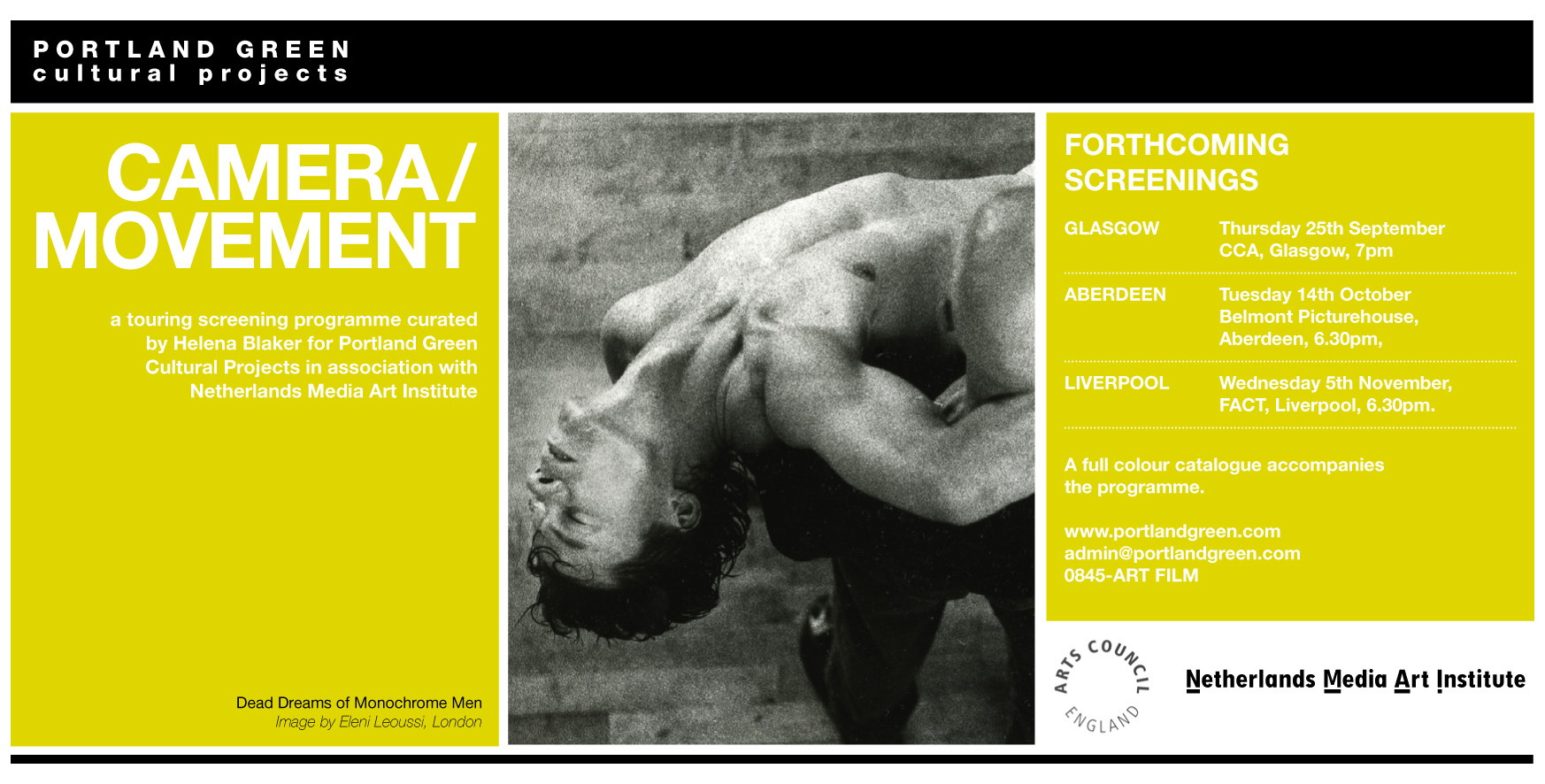Camera/Movement
Camera/Movement, 2007
60 Minutes
Curator: Helena Blaker
A touring screening programme, curated by Helena Blaker and produced by Portland Green Cultural Projects for CAPTURE, 2007-2008 in partnership with Netherlands Media Art Institute.
SCREENINGS:
Bristol
Belmont Picture House, Aberdeen; 14 October, 2008 (part of Dance Live 2008)
FACT, Liverpool, 5 November, 6:30pm 2008
CCA Glasgow, 25 September, 2008
PROGRAMME:
The screening programme includes Michael Clark in Prospero’s Books (Peter Greenaway, 1991)
In Greenaway’s film of Shakespeare’s The Tempest, we see the use of theatrical conventions as well as the movement of the camera in film-making – the proscenium frame as well as the lateral movement of the camera and the creation of spaces available to film – to create a different contemporary evocation of power and social roles. Greenaway tells the story by visual rather than verbal means. His method is to use long tracking shots to travel through the architectural interiors of Prospero’s imagination and to arrive at tableaux which show the dramatic scenes. In these scenes, it is choreographed movement that shows the tension between the characters – as in the case of Caliban’s confinement by Prospero – or the stately manipulations Prospero is effecting between the other players. In contrast to the relationship between body and space common to other works in this programme, here Greenaway creates the space that Clark inhabits independently, although as a performer he keenly makes use of the camera’s position. Clark’s own style of movement as a choreographer and dancer is ‘framed’ by Greenaway in this way, to illustrate the power struggle between Caliban and Prospero, with Clark’s ‘wild creature’ Caliban showing both the exquisite movements of Clark’s classical training and his individual (and here wayward) movement designs. Clark’s movement is very different from that of other characters throughout the film, and Greenaway makes use of his individuality and expressiveness to make this a central narrative thread.
In this scene, Caliban entices the fools of the royal court to follow him. Where in earlier scenes his movement has been circular and contained, here he begins to test his spatial affinities differently, using linear extension as well as elaborate and classical movement, which the camera sets up within an architectural frame.
And Michael Clark in The Late Michael Clark (Sophie Fiennes, 2000)
Clark has worked with a number of film directors to create works for film from the stage. Here he works closely with the filmmaker Sophie Fiennes, who responds to each musical phrase in the choreographed stage work Current/See. In this short extract, the camera ‘holds’ and yet allows Clark to remain isolated within a circle of surrounding musicians, gradually moving closer so that the personal cost and process of the work – its fluid development and its points of delineation – are clearly seen.
Helena Blaker
